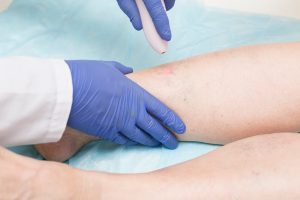 It’s doubtful that your vein health is top of mind, and you likely don’t even notice them unless you think there is a problem, like a spider vein or varicose vein.
It’s doubtful that your vein health is top of mind, and you likely don’t even notice them unless you think there is a problem, like a spider vein or varicose vein.
But vein health can be impacted by more serious health conditions, too. Obesity, heart disease, diabetes, and even genetics can play a role in vein health. Lifestyle can too.
Advertisement
People have about 60,000 miles of vasculature – arteries, veins, tiny capillaries – that carry blood and nutrients to the various parts of the body while also clearing away waste. They essentially act as a return highway system to the heart, and any traffic slowdown will be felt miles down the line.
Two vein problems you may notice are varicose veins and spider veins, and they mostly occur in the legs.
Spider veins are largely aesthetic. They are essentially tiny varicose veins that don’t lead to any blood collection or pain. There is likely something going on deeper in the vein that a doctor should examine if they do.
Varicose veins are caused when valves in blood vessels are not opening and closing properly, causing blood to collect. They can be large, twisty veins that may bulge and can lead to symptoms like redness, warmth, or achy, tired legs.
Sometimes varicose veins can lead to inflammation or blood clots and should be checked by a doctor.
You can do various things to help prevent the likelihood of both varicose and spider veins. Here are some ways to keep your veins healthy:
- Stay active: The more blood that’s moving through your veins, the better. Extended periods of sitting or standing can lead to blood pooling and contribute to unhealthy veins. Get up regularly to keep things moving.
- Keep hydrated: Water acts as a blood thinner to help it flow better.
- Eat fruit and vegetables: These foods are great for circulation and the health of vein walls.
- Don’t smoke
- Try compression socks: Compression socks help contract muscles around veins to help move blood up towards the heart.
- Put your feet up: Sitting with your feet up above waist levels can be helpful to get the blood flowing.
- Skin brush: Brushing your skin in the shower, from the feet up, can also help with blood flow.
